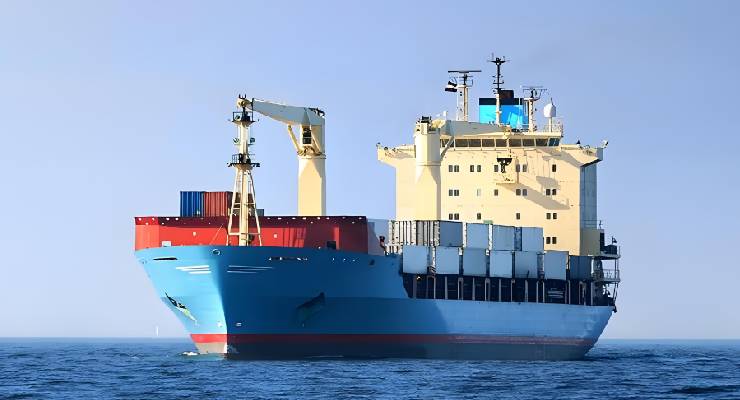
Efficient and reliable shipping is at the heart of any successful business. If your company deals with canned goods, ensuring the safe and secure delivery of your products is not just a necessity but a vital aspect of your brand’s reputation and customer satisfaction. Shipping cans may appear straightforward, but it entails challenges and considerations that can significantly impact your operations and profitability.
Experience seamless global can shipping with Winsail today. Ship with confidence, track your cans online, and take the first step towards efficient international shipping.
Table of Contents
1.Packing, Labeling, and Documentation for Shipping Cans Worldwide
2.Shipping Regulations and Restrictions
3.Shipping Cost Optimization
4.Global Can Shipping Made Simple with Winsail
Conclusion
Packing, Labeling, and Documentation for Shipping Cans Worldwide
Suitable packing, accurate labeling, and thorough documentation are critical components of a successful and compliant shipping process when shipping cans worldwide. Whether you’re sending your products to international customers, distributors, or partners, ensuring that your cans arrive safely and meet all regulatory requirements is paramount.
Packing Cans Safely
1.Secure Packaging: Select packaging materials that adequately protect your cans during transit. Depending on the fragility of your products, consider using sturdy cartons, padded boxes, or specialized packaging designed to prevent damage.
2.Interior Cushioning: Use cushioning materials like foam inserts, bubble wrap, or air pillows to prevent cans from moving and colliding during shipping. Ensure that there is minimal space within the packaging.
3.Layering and Stacking: If shipping multiple layers of cans, use dividers or separator sheets to prevent cans from touching and potentially causing dents or scratches. Stack cans securely to distribute weight evenly.
1.Sealing and Taping: Seal packages securely with high-quality tape to avoid accidental opening during transit. Double-check for any weak points that may compromise the integrity of the package.
2.Consider Climate and Handling: Be mindful of your shipment’s climate conditions. If there’s a risk of extreme temperatures, choose insulated packaging to protect against temperature variations.
Labeling Requirements for Shipping Cans
1.Shipping Labels: Ensure your shipping labels are clear, accurate, and prominently placed on the package. Include the recipient’s name and address and your return address.
2.Fragile or Handle with Care Labels: If your cans are fragile or require delicate handling, use appropriate labels to inform handlers of this. It can help prevent rough treatment during transit.
3.Hazard Labels: If your canned products contain hazardous materials, follow international regulations for labeling dangerous goods. Use hazard labels and symbols as required.
4.Customs Documentation Labels: International shipments require customs declarations and labels, including information about the contents, value, and origin of the products. Make sure these are complete and accurate to facilitate customs clearance.
Essential Documentation for Shipping
1.Commercial Invoice: Provide a detailed commercial invoice with information on the contents, quantity, value, and weight of the shipment. Accurate invoicing is crucial for customs clearance and import duties.
2.Bill of Lading or Airway Bill: This document is a receipt of goods and a contract for transporting your cans. Ensure the bill of lading or airway bill matches your shipment details accurately.
3.Certificate of Origin: For international shipments, some countries may require a certificate of origin to confirm the source of the products. Verify whether this document is necessary for your destination.
4.Customs Forms: Depending on the destination country and the nature of your cans, you may need to complete customs forms such as the CN22 or CN23 for postal shipments or other relevant customs documentation.
5.Export Licenses and Permits: If your product falls under controlled or regulated categories, obtain any required export licenses or permits to comply with international trade regulations.
Properly packing, labeling, and documenting your cans for worldwide shipping ensures their safe arrival and helps you navigate the complexities of international shipping regulations. Following these guidelines will help you streamline the shipping process and avoid potential delays and customs issues.
Shipping Regulations and Restrictions
Shipping cans, whether domestically or internationally, involves adherence to a complex web of regulations and restrictions. Understanding and complying with these guidelines is essential to ensure your goods’ legal, secure, and timely transportation.
Domestic Regulations
In most countries, domestic regulations govern the transportation of cans within their borders. These regulations cover aspects such as packaging, labeling, and handling procedures. It’s vital to familiarize yourself with your country’s specific rules, as they can vary based on the nature of the contents within the cans.
International Shipping Regulations
Shipping cans internationally adds an extra layer of complexity. You must adhere to the laws and regulations of both the exporting and importing countries. International shipments typically require compliance with various treaties, agreements, and organizations. The United Nations Recommendations on the Transport of Dangerous Goods (UNRTDG) play a significant role in regulating the shipping of hazardous materials internationally.
Restricted and Prohibited Items
Many countries maintain lists of restricted and prohibited items. These lists can include goods entirely banned from import or export and items subject to specific conditions or restrictions. It’s crucial to be aware of these lists and check them regularly, as they can change over time. For instance, some countries restrict the import of alcoholic beverages, while others may prohibit certain chemical products.
Special Considerations
Certain products require specialized permits or documentation. For example, shipping canned food products may necessitate adherence to food safety regulations and certifications, while pharmaceuticals may require approval from regulatory bodies.
Understanding these regulations and restrictions is essential to avoid costly delays, fines, and potential legal issues.
Shipping Cost Optimization
Shipping cost optimization is a critical component of any business’s logistics strategy. It involves the careful management and reduction of shipping expenses while maintaining the quality and efficiency of the supply chain. Cost optimization requires a comprehensive approach considering carrier selection, packaging efficiency, route optimization, and negotiation with shipping providers. By implementing cost-effective measures and leveraging data analytics, businesses can streamline their shipping operations, reduce expenses, and ultimately enhance their competitiveness in the market. Balancing cost optimization with the need for timely and reliable deliveries is a delicate but rewarding endeavor that can significantly impact a company’s profitability and customer satisfaction.
Global Can Shipping Made Simple with Winsail
Winsail is a freight forwarder with a proven track record of efficiently shipping cans .Our expertise in managing the intricate logistics of can shipments is complemented by their user-friendly online platform, making the entire process more accessible and transparent. With Winsail, customers can experience a seamless shipping journey, from quote requests to online tracking and real-time shipment updates.Enhances the overall shipping experience and enables businesses to maintain a high level of control and confidence in their supply chain.
Conclusion
In conclusion, shipping cans is a multifaceted process that demands meticulous attention to detail. From selecting the right can type and packing materials to adhering to shipping regulations and optimizing costs, this comprehensive guide has equipped you with the knowledge and strategies needed for successful can shipping. By prioritizing quality, compliance, and sustainability in your shipping practices, you can ensure that your cans arrive at their destination intact and on time, all while positively impacting your business and the environment.
-
 A Comprehensive Guide to Refrigerated ContainersJun 17,2025
A Comprehensive Guide to Refrigerated ContainersJun 17,2025 -
 Guide to 20ft & 40ft Shipping Container Dimensions for Global LogisticsJun 17,2025
Guide to 20ft & 40ft Shipping Container Dimensions for Global LogisticsJun 17,2025 -
 How to track shipments sent from ChinaMay 13,2025
How to track shipments sent from ChinaMay 13,2025 -
 Guide to Importing and Shipping Cars from China to UAEMay 13,2025
Guide to Importing and Shipping Cars from China to UAEMay 13,2025 -
 Guide to Importing and Shipping Camping Gear from ChinaMay 07,2025
Guide to Importing and Shipping Camping Gear from ChinaMay 07,2025 -
 Shipping from China to YemenMay 06,2025
Shipping from China to YemenMay 06,2025

